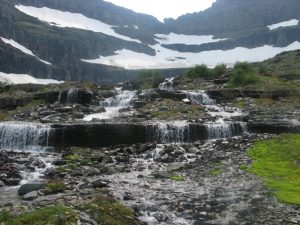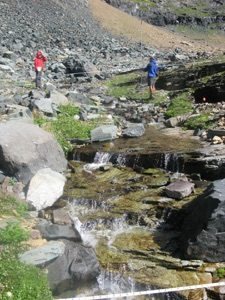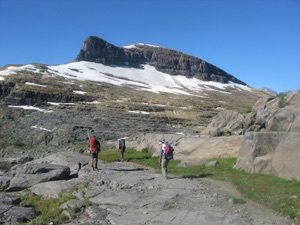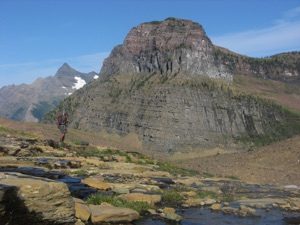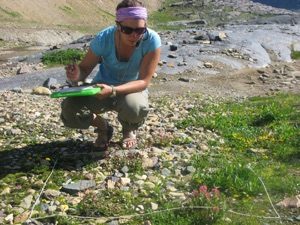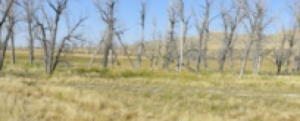The abundance of glaciers was the key natural feature that lead to the formation of Glacier National Park in the early 20th century. However, rapid warming and melting since the end of the little Ice Age and 20th century warming has lead to the loss of many glaciers in the park. The loss of ice produces rapid melting and high flows in glacier supported streams, but once the ice is melted the stream changes to a snowmelt dominated hydrologic regime. Other streams are driven by ground water discharge. This project in cooperation with Glacier National Park and the National Park Service Inventory and monitoring program is investigating potential changes in riparian biota along streams that currently are supported by glaciers, and those that had glaciers in the past. The program goal is to develop a predictive model of how streamside biota will change as the climate changes and glaciers continue to melt. Graduate student Cristina McKeneran (middle left photo) is working on this project.
